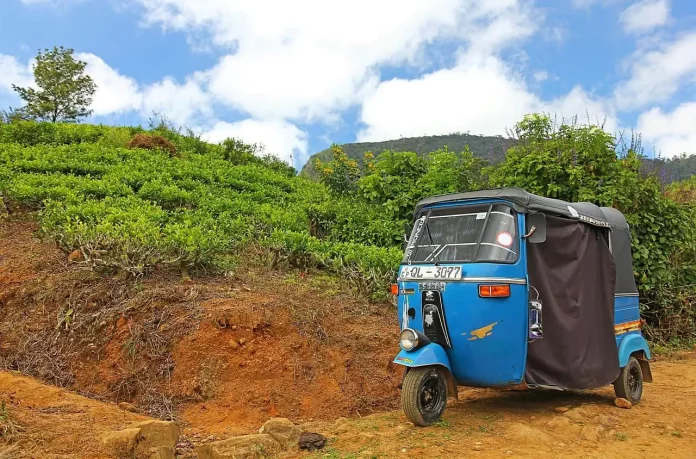Tuk Tuk in Sri Lanka is a small vehicle with three wheels. Commonly seen in Sri Lanka and India, this vehicle is widely used as a family vehicle as well as a taxi. Recently, the tourism industry of Sri Lanka has started talking about tuk tuk, and the reason is that tourists are very attracted to this vehicle cause they rent a tuk tuk in Sri Lanka for their travel purposes. So today in this article we will see how to do your trip with a tuk-tuk, how to rent or hire, safety, and many more.
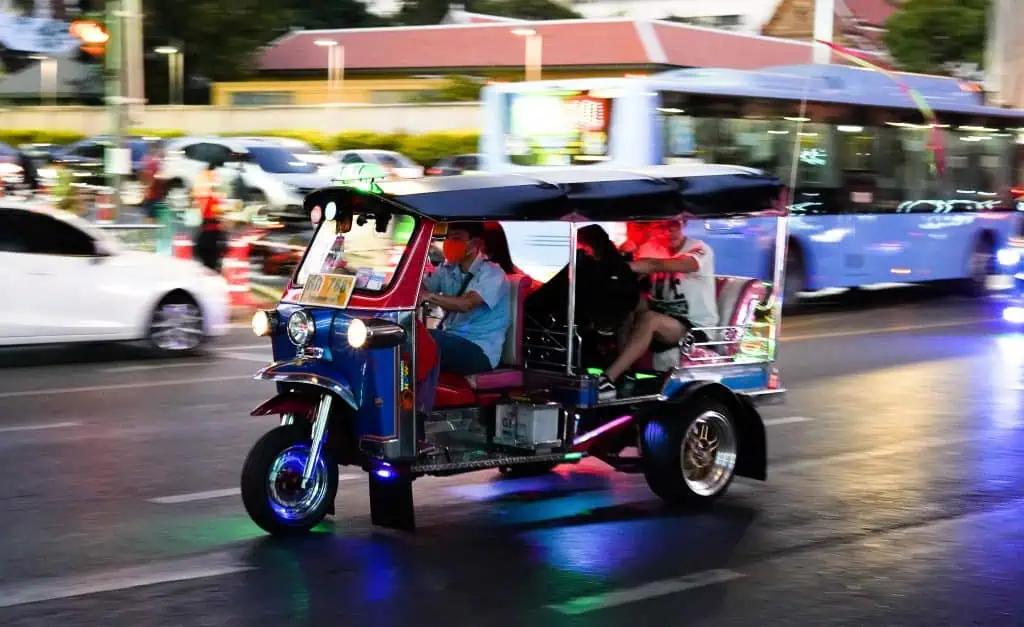
Rent a tuk tuk in Sri Lanka
A tuk tuk can be rented in Sri Lanka from many agencies. Ranging from small regional companies as well as big rental companies covering all over Sri Lanka. If you want to use a tuk tuk from the beginning to the end of your Sri Lanka tour, it is better to rent from Colombo or Negombo because you have to come to Katunayaka Airport again to take off.
Where Can Rent a tuk tuk in Sri Lanka
Tuk Tuk Rental is one of the best rental companies in Sri Lanka that we can recommend. The excellent customer service of this establishment has made it popular among tourists.
When renting a tuk-tuk, just like any other vehicle, you have to place a deposit and then at the end of the period, when you hand over the vehicle or inform the company of the required number of days, you can pre-pay or post-pay. The companies hand over the vehicle for you with an insurance policy and other necessary documents and also insurance has an accident cover, so You can ensure a hassle-free journey.
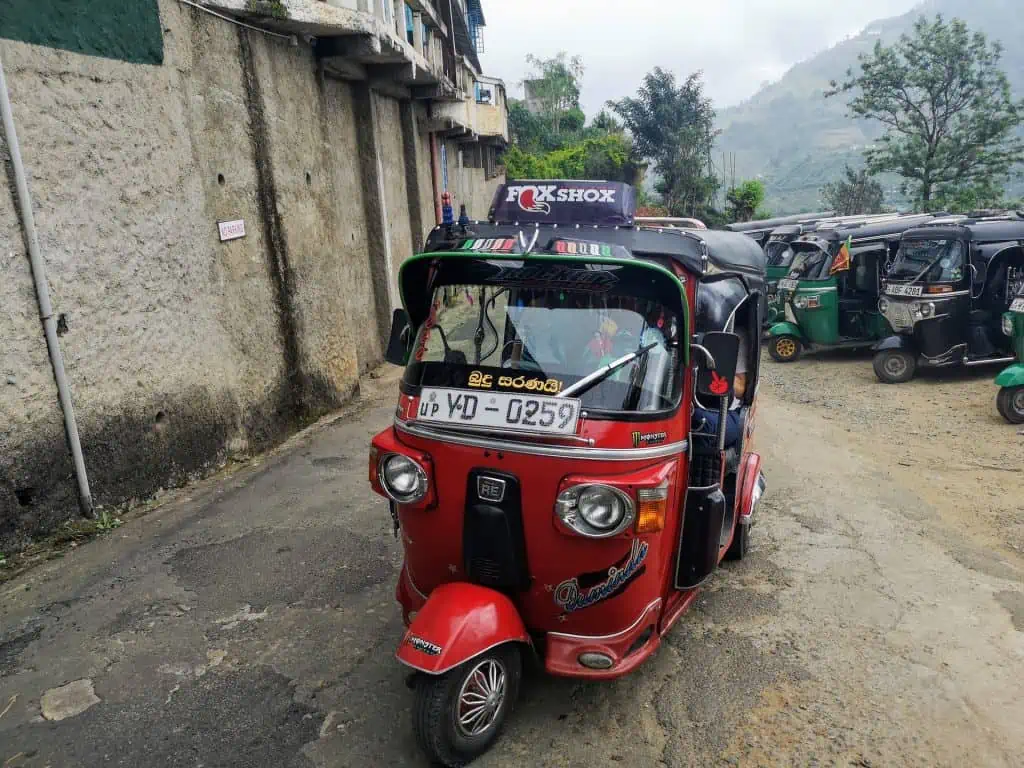
Suggested Read – Best Sri Lanka Road Trips
Cost For Rent A Tuk Tuk In Sri Lanka
Renting a tuk tuk starts at $30 per day and requires a $150 deposit. The amount of money to be paid per day decreases as the number of days increases and additional money has to be paid for spare parts like a surfing board rack and Baby seat. And if you apply for a Sri Lanka driver’s license through rental agencies, you will have to pay $40 for that.
What documentation is required to rent a tuk-tuk in Sri Lanka?
There are several documents that you need to present to rent a tuk tuk. they are
1. Your passport
2. Your international driving license
3. Your Sri Lanka Driving License
Among these, we know that you do not have a Sri Lanka driving license. But you have to get a temporary Sri Lanka driving license. That is because Sri Lanka is one of several countries that do not accept international driving licenses.
But here you have something advantageous, that is, if you have your international driver’s license, you can get a temporary Sri Lankan driving license from the Sri Lankan Automobile Association or the Department of Motor Traffic Institutions.
To make this process easier, and for a more efficient service to you, many rental companies apply for a temporary driving license for you and facilitate you to get the driving license within 2-3 days of your arrival in Sri Lanka.
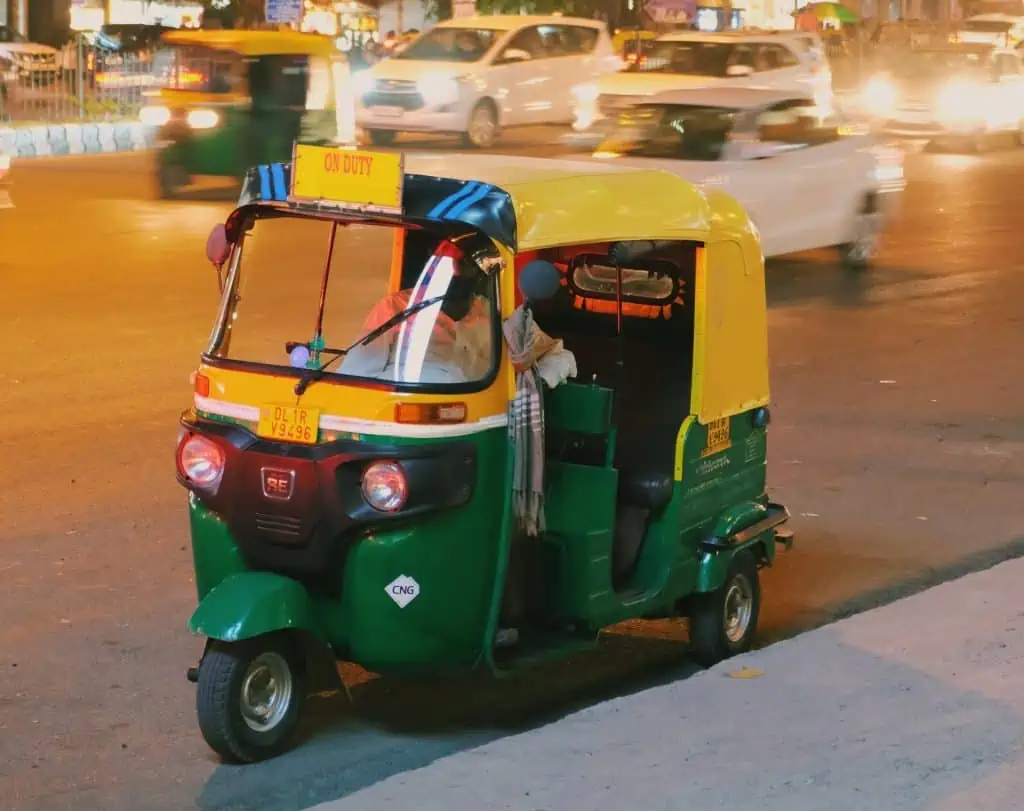
What to check before renting a tuk tuk in Sri Lanka?
Before rent a tuk tuk in Sri Lanka, you must check whether you have the necessary legal documents and permits. Also, check the condition of the vehicle.
Document Side
- Vehicle Revenue Permit
- Certificate of Insurance
- Vehicle smoke emission certificate
Vehicle Side
- Condition of tires
- Brake
- All lights including light bulbs
- All meters including the speedometer
- Tools for short newbies
- Spare wheel
- Kickstarting lever
- Ease of shifting and neutralizing
- Ease of clutch handling
- Rain covers
- Mobile charging unit
- Engine oil, brake oil
How to drive a tuk tuk in Sri Lanka
Have you ridden a motorcycle?
If you had, Then tuk tuk riding is so simple. The main controller here is not a steering wheel but a handlebar. However, unlike motorcycles here, there is no lever for the front brakes but there is a brake system that can be applied to both the rear and front using legs.
When you sit in the driving seat you will see the handlebar, meter panel, and other buttons.
- You should start the vehicle using the key or starting button.
- You can apply the 1st gear push the clutch and rotate the gear lever to the backside. (To Your side). You Should hold the clutch when you rotate the gear lever.
- Now smoothly release the clutch and apply gas as you do with a motorcycle.
- When you feel like moving the vehicle you can try second gear. As for the first gear should push the clutch and rotate the gear lever to the front side. you will feel one stop but it is not the second gear, it is neutral. after that one is second gear. You can apply the second gear at one time rotating the gear lever to the second stop.
- Until the 5th gear, you repeat the same method. Making gear neutral is a little bit hard because it is in the middle of the 1st and 2nd gear stops.
- To stop or slow down the three-wheeler you can press down the brake paddle.
- The rest of the control buttons you can see on the lever and you can use them for your needs.
- To reverse the vehicle there is a lever under the handle and between your legs. Neutral the gear and then Put the lever down. Then Apply the first gear and release the clutch slowly, looking at the back mirrors. to move front pull the lever up and follow the above steps.
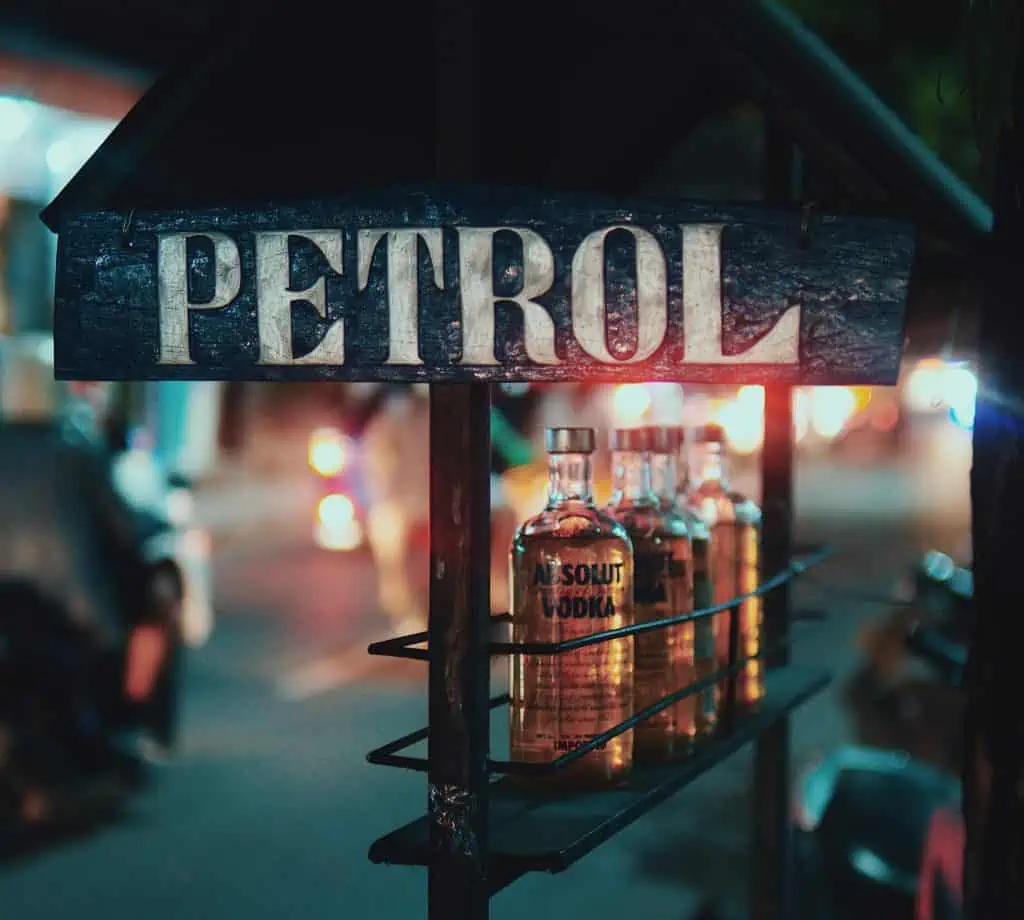
Speed Limits and Traffic Rules Specific For Tuk Tuk
In addition to the normal vehicle traffic laws in Sri Lanka, there are some special traffic laws for tuk tuks. If they are,
- Always drive on the left lane
- Maximum speed limit 40kmph
- Maximum passenger capacity is 4 including driver
- Driving on highways is not allowed
Advantages of Traveling By Tuk Tuk in Sri Lanka
- The freedom to stop or start your journey whenever you want
- Ability to travel on narrow roads and areas inaccessible to public buses and other vehicles.
- Being a cheaper mode of transport compared to renting a car for the day
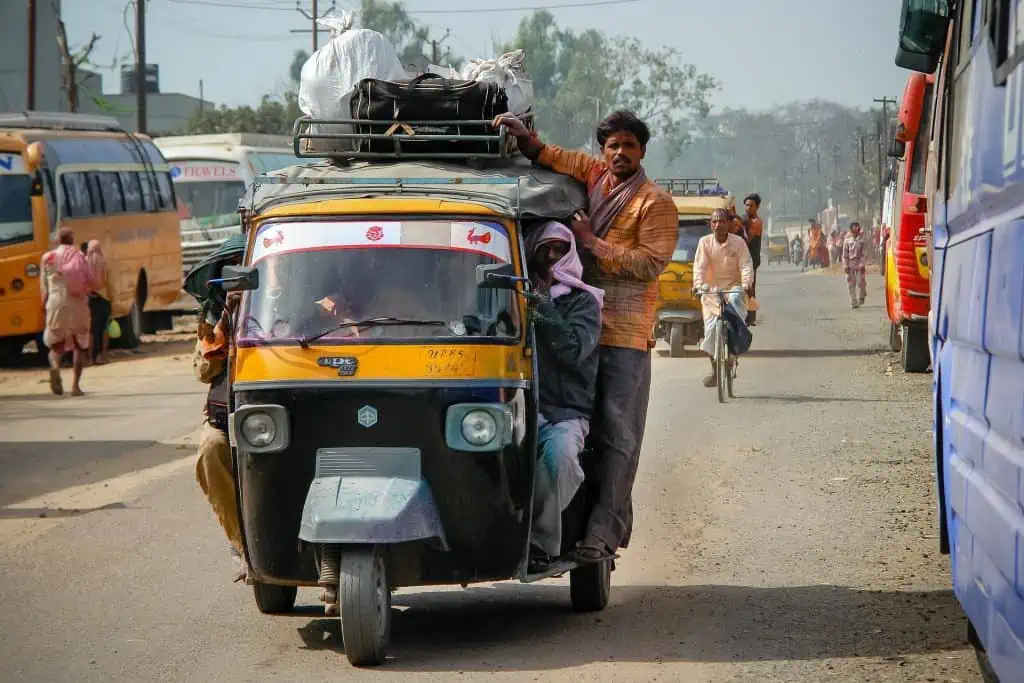
Disadvantages of Traveling by tuk tuk
- Fatigue and tiredness in a long ride due to not having comfortable seats
- Travel time takes longer than normal due to speed limits
- Lack of facilities for bags or other things due to small space
- Increased damage in an accident due to a lack of airbags or advanced accident protection facilities
- Being narrow tires and having only three wheels, the ability to roll over in bends when driving fast
- There is only space for 4 people, so the passengers get very little space when traveling with bags
- Having to carry your valuables things and bags with you at all times as the vehicle is not fully lockable or closed.
- The possibility of animals such as Monkeys entering the vehicle and taking your things etc
- Thieves can easily access the inside of the vehicle, so always have to stay within sight of the vehicle or leave bags and other items in a safe place while traveling.
Hire a tuk tuks in Sri Lanka
In Sri Lanka, you can hire a tuk tuk to go from one station to another or for a city tour. Here the services are provided in various ways and some drivers charge per kilometer or for a complete city tour. Generally, a fee of Rs 100 is charged for one kilometer and Rs 90 from the second kilometer onwards.
However, many drivers charge more than the amount regulated by the government. But here, by traveling with registered tuk tuks with Sri Lanka’s famous taxi service apps like Pick Me and Uber, it is possible to avoid the inconvenience of paying money.
How to avoid tuk tuk scams In Sri Lanka
Many scams by tuk tuk drivers on tourists are reported from Sri Lanka nowadays. The main reason for this is that tourists like tuk tuks and hire them but don’t know the chargers and understand the country’s locations. We provide some measures that you can follow to ensure a safe journey by avoiding such fraudulent activities.
1. Check the distance to your destination before hire a tuk tuk for your journey. Get a clue on which way to go.
2. After finding a driver for your journey, before getting into the vehicle, show the destination and the route to be taken, state the distance, and ask about the required amount. Never get into the car and discuss these things. Then start the journey only after you and him agree on the price and pay attention to whether the route he is taking is the same as you said. Immediately after reaching the destination, pay only the agreed amount or give a tip if you are happy with the service.
3. Talk in advance about the amount required for city tours, and the amount charged for waiting, and do not choose tuk tuk for city tours without prior planning. For planning, Get an idea about the distance from place to place and measure the whole distance through software such as Google Maps. Get out of the vehicle immediately after the trip and pay the agreed amount or the agreed amount per kilometer for the distance traveled.
4. Never leave your luggage in the vehicle and never pay before the end of the journey. If the places they recommended during the trip are not in your plan, kindly decline the suggestions. Always keep attention to the location where you in.
Conclusion
Finally, renting a tuk tuk in Sri Lanka is not just a mode of transport, it is an adventure waiting to unfold. Get ready to savor the freedom, cultural immersion, and unmissable adventure you crave by joining a tuk tuk tour.

